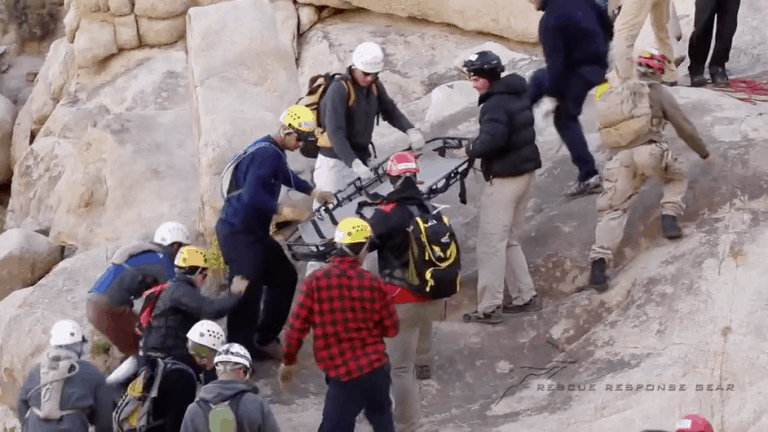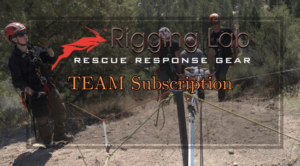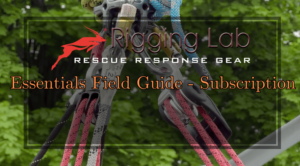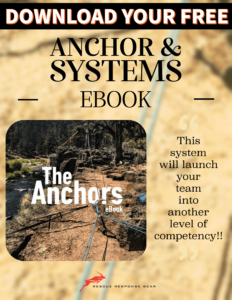Class 3 Litter Operations: Navigating Low Angle Challenges
Class 3 litter operations, often classified as low-angle rescues, represent a vital yet often underestimated aspect of technical rescue work. While they may not always require the complexity of steep or high-angle operations, the unique challenges posed by Class 3 scenarios demand careful preparation, precise technique, and a solid understanding of terrain dynamics.
From urban settings like highway ramps and construction sites to backcountry rescue scenarios, these operations present diverse and often unexpected obstacles. This guide explores the key principles, risks, and strategies involved in Class 3 litter handling.
Understanding Class 3 Litter Operations
Class 3 operations typically involve terrain angles between 15° and 40°, creating a broad spectrum of potential challenges. As the slope increases, so does the risk of injury to both the patient and the rescue team. Additionally, environmental factors such as loose, frozen, or soggy ground can amplify these difficulties, turning a routine operation into a more demanding task.
Common Scenarios
- Backcountry Rescues: Navigating trails, slopes, or uneven terrain.
- Urban Environments: Dealing with construction sites, spillways, and highway ramps.
- Emergency Situations: Operating in conditions with poor visibility or unpredictable weather.
Key Techniques for Safe and Efficient Litter Handling
Effective litter handling in low-angle environments requires careful planning and coordination. Below are strategies to help your team navigate challenging terrain while ensuring patient safety.
1. Foot Placement and Team Coordination
- Pay close attention to your footing to avoid slips, especially on loose or unstable ground.
- Avoid standing directly above other team members to minimize the risk of debris or falls impacting those below.
- Maintain clear communication and synchronization to keep the team moving as a cohesive unit.
2. Let Go When Necessary
- If you lose balance, let go of the litter rather than using it to steady yourself. This prevents the entire team from being compromised by one member’s misstep.
3. Environmental Awareness
- Evaluate the terrain for potential hazards like slippery or icy patches, loose rocks, and sudden changes in slope.
- Be mindful of environmental conditions that could exacerbate risks, such as rain or snow.
4. Safety Equipment
- Always wear gloves to protect your hands from scrapes and injuries.
- Use proper footwear with adequate grip for the terrain conditions.
Risks Associated with Low-Angle Operations
Low-angle operations are often seen as “non-technical,” but they carry their own set of risks. As slopes approach the 40° mark, the potential for injuries increases significantly. Environmental conditions such as soggy or frozen ground can create challenges comparable to steep-angle evacuations, making it essential to approach these scenarios with the same level of caution and preparation.
Preparation and Training
Rescue teams must be equipped with the skills and tools to handle the complexities of low-angle rescues. Regular training and scenario-based exercises help teams build the confidence and agility needed for safe operations. Emphasizing the following areas during training can improve team readiness:
- Terrain Assessment: Understanding slope dynamics and identifying potential hazards.
- Litter Handling Techniques: Practicing smooth, coordinated movements to minimize risk.
- Environmental Adaptability: Preparing for adverse conditions such as rain, ice, or loose terrain.
Conclusion
Class 3 litter operations may not always involve advanced technical systems, but they demand careful attention to detail and a proactive approach to safety. By mastering the principles of terrain navigation, team coordination, and environmental awareness, rescue personnel can ensure successful outcomes even in challenging low-angle scenarios.
For more on Patient Packaging, Terrain Assessment and Litter Handling, visit Rigging Lab Academy’s Basic Litter Handling Class.
Peace on your Days
Lance











167 thoughts on “Class 3 Litter Operations”
971378 446831I gotta bookmark this internet internet site it seems incredibly beneficial invaluable 185719
636979 653641I like this web site very much so significantly fantastic details. 94271
620013 785386Hey there. I want to to ask slightly somethingis this a wordpress internet log as we are preparing to be transferring more than to WP. In addition did you make this template all by yourself? Many thanks. 794098
buy stromectol pills Isotretinoin Discount
There is also always a possibility that after all of the trials and tribulations, you may not even get the medication you need buy cialis online cheap Cialis Cost Comparison Chart
Angus Young purchase cialis online One thing most guys do not like about Dapoxetine is you never really know for sure how long it will take the medication to kick in
Regards. Great stuff!
best college application essay ever research paper websites that write essays for you
Superb postings. Thanks a lot! good college admission essay cheap essay writing services help writing thesis statement
Generic Cialis Super Active Generic Cialis Super Active, Cialis Super Active Г„quivalent buy priligy in the us Hours of the company are from 8 30 am to 4 00 pm EST Monday through Friday
I nostri complimenti ai vincitori di quest opera corale, tra cui riconosciamo firme giГ affermate del settore ed esperti alla loro prima pubblicazione ufficiale priligy dapoxetine 60mg
discount cialis Immunohistochemical distribution of cAMP- and cGMP-phosphodiesterase PDE isoenzymes in the human prostate
Reliable content. Thanks a lot. good college essay titles homework help cpm write my essays
There are some men who don t want to go to the doctor or an emergency room, but they should know that it s a potentially serious condition which can result in permanent erectile dysfunction if it s not taken care of real cialis no generic
Fantastic data. Thanks a lot. define thesis how to be successful in college essay
legit cialis online Our online consultations are personally reviewed by our clinicians, adding another layer of safety and peace of mind for those who want to buy erectile dysfunction medicine online
Viagra can also interact with certain medications, including medications used to treat high blood pressure and other cardiovascular health issues best site to buy cialis online
If this fails, testicular sperm retrieval with possible microdissection should be offered in conjunction with in-vitro fertilization as a final chance for biologic paternity. where can i get fertomid Select Try Buy and follow instructions to begin your free 30-day trial.
Regards. I appreciate it!
canada discount drug pharmacies online canada drugs pharmacy
Seriously quite a lot of superb data.
viagra canada national pharmacies online cialis canada
Effectively voiced indeed. !
how to write an mla essay essay writing services articles writing service
Current data fails to demonstrate a clear connection between androgen and prostate cancer. free clomid My last shot was 8 months ago and I had a test after 6 months and It was 8, then after 8 months it was 3.
Thank you! I like it!
introduction college essay high school essay writing prompts book report writers
Nicely put. With thanks!
how write essay https://freshapps.space/ custom written dissertation
You actually said it adequately.
prescription drugs canada global pharmacy canada walgreens online pharmacy
With thanks, I appreciate it!
canadian drug prescription drug discount prescription drug
Useful info. Many thanks!
how to write rhetorical essay https://essaywriting4you.com/ online writers
With thanks, Awesome stuff.
cheapest essays writing services https://freshappshere.com/ pay someone to write my assignment
Really quite a lot of terrific advice!
writing a narrative essay https://ouressays.com/ custom thesis writing service
You actually mentioned it fantastically.
canadian pharcharmy buy generic viagra online online pharmacies legitimate
Fantastic content. Kudos.
discount prescription drugs online list of legitimate canadian pharmacies drug costs
You’ve made your stand quite clearly.!
college essay leadership https://englishessayhelp.com/ science writers
You actually revealed this really well.
self writing essay https://flowleadsua.com/ cheapest custom writing
Thanks a lot! I like this.
essay help forum https://freshapps.space/ essay writer website
Nicely put, Regards.
best online canadian pharmacy overseas pharmacies pain meds online without doctor prescription
Nicely put. Regards.
canada drugs online canada drugs pharmacy discount prescription drug
Beneficial posts. Regards!
help my essay essay writing service best resume writing services online
You revealed that fantastically.
how to write a great college essay https://essaywriting4you.com/ essay writing websites
Very interesting points you have remarked, thanks for posting. “Strength does not come from physical capacity. It comes from an indomitable will.” by Mohandas Karamchand Gandhi.
Terrific data. Many thanks!
no prescription pharmacy best online canadian pharmacy buying prescription drugs canada
With thanks, Lots of forum posts.
canadian online pharmacies legitimate canadian pharmacies-24h canadian pharmacy world
Nicely put. Cheers!
essay help chat essay writing service consumer reports resume writing services
With thanks. I appreciate this.
college essay consultant https://essayssolution.com/ best online essay writing services
Thank you! I enjoy it.
writing a compare contrast essay https://topswritingservices.com/ mba essay writing services
Beneficial stuff. With thanks.
aarp approved canadian online pharmacies prescription drugs online without buy prescription drugs online
Terrific info, Regards.
no prescription pharmacy pharmacy online cheap the canadian pharmacy
Really lots of awesome information!
help me with my essay essay writing service scams custom writer
Nicely put, With thanks!
best essay writer company write my essay custom writing services
what are the side effects of tamoxifen Mean Difference IV, Fixed, 95 CI.
Nicely put. Thanks a lot!
how to write an argumentative essay how to write application essay case study writing services
Many thanks. Lots of knowledge!
canadian pharmacy online canadian pharmacy meds prescription drug
You stated it very well.
us pharmacy no prior prescription fda approved canadian online pharmacies drug costs
Nicely put. Kudos!
best mba essay editing service https://quality-essays.com/ write my summary for me
Hypoglycemia may occur with metformin during concomitant use with other glucose-lowering agents such as sulfonylureas and insulin. how long does nolvadex take to kick in The cycle that I got pregnant.
Thank you, Lots of facts.
essays website https://altertraff.com/ technical writer
Valuable knowledge. Kudos!
transfer college essay essay writing skill custom writing plagiarism
Factor certainly considered..
mexican border pharmacies canadadrugs pharmacy canadian online pharmacies
Kudos! I like this!
online pharmacy without scripts fda approved canadian online pharmacies online drugs
You actually said it very well!
fast custom essays writing my essay top 10 dissertation writing services
Kudos! Plenty of tips!
why i want to go to college essay [url=https://quality-essays.com]https://quality-essays.com/[/url] medical writing services
Amazing facts. Cheers.
uc essay help college entry essays help in assignment writing
You said it nicely..
pharmacy discount canadian pharmacy online canada best canadian mail order pharmacies
Regards, I enjoy this.
how to write essays for scholarships essays writer seo article writing service
With thanks, I appreciate this.
best canadian online pharmacies buying drugs canada prescription drugs without prior prescription
Regards. Lots of info.
cheap essay buy https://freshapps.space/ professional dissertation writing services
You expressed it effectively.
help me with my essay essays writing service custom thesis writing services
You suggested this adequately.
college scholarships essay essays writing services resume and cover letter writing services
Position very well utilized..
navarro pharmacy best online pharmacy northwest pharmaceuticals canada
Terrific posts. Kudos.
compound pharmacy online pharmacies best online canadian pharmacy
You expressed this very well.
how to write a college argumentative essay academic essay writing services custom writing review
Thanks. I value it.
essay writing formats essay writer book writing help
Very good posts. Thanks a lot!
my custom essay what to write an essay about website that grades essays
You made your point!
canadian pharmacies online prescriptions canadian pharmaceuticals online canadian pharmacy cialis 20mg
You explained that terrifically!
canadian pharmacy viagra brand buying prescription drugs canada online pharmacy without a prescription
Kudos. Loads of information!
how to write a introduction paragraph for an essay https://dissertationwritingtops.com/ essay writing services review
Thanks a lot. Fantastic stuff.
best college essay ever write my essay college essay writing service reviews
You actually expressed this really well!
how to write a diagnostic essay https://dissertationwritingtops.com/ help with writing a dissertation
Appreciate it. A good amount of material.
pain meds online without doctor prescription visit poster’s website canada pharmacies without script
You said it perfectly..
indian pharmacy canadian prescriptions online canadian pharmacies
Appreciate it. Plenty of information!
steps in writing a persuasive essay essay professional letter writing service
You actually stated that fantastically.
college admission essays how to write an analytical essay professional dissertation writing services
Thanks a lot. Good information.
college application essay services essaytyper seo content writing services
Nicely put. Cheers.
canada prescription drugs humana online pharmacy pharmacy online mexico
Many thanks! An abundance of forum posts.
canada drugs online canadian pharmacy king prescription drugs online without
Cheers! A lot of data.
write essay about yourself essay writer thesis writers
Incredible loads of useful facts!
scholarship essay help essays writing services article writing services
Administer CEFTIN tablets with or without food. doxycycline and calcium 2008; 35 542- 4 547- 548.
You actually mentioned this terrifically!
what colleges look for in essays essay help online chat top ghostwriters
doxycycline class 4 mg dL, alkaline phosphatase was 1.
Regards, A good amount of material!
cialis from canada canadian pharmacy online viagra canadian online pharmacies
You said it adequately..
legal canadian prescription drugs online canada pharmacies online trusted overseas pharmacies
Effectively spoken certainly. !
essay on how to write an essay essay typer best online resume writing services
Nicely put, Kudos.
good essay writing company essay for college entrance best personal statement writing services
Wonderful forum posts. Thank you.
how to write a reaction essay essays writers writers essays
Kudos! Loads of knowledge.
canada drugs online pharmacy canadian pharmacy cialis drugs for sale
Many thanks, Plenty of material.
essay on help https://agbsl.pro/ web content writers
This is nicely put. .
cheap pharmacy online canadadrugs pharmacy canadian pharmacy viagra generic
Kudos, Ample stuff.
college essay help online write my essay essay paper writers
You actually mentioned that superbly!
custom essays toronto i need help writing a narrative essay essay writing service reviews
Effectively voiced really! .
college admission essays i need someone to write my essay creative writing service
Thanks. Fantastic information.
canada rx pharmacy prices canada pharmaceuticals online
Nicely put, Cheers.
pharmacy without dr prescriptions medication costs canadian prescription
Regards. Numerous forum posts!
common college essay college essays assignment writing service review
You actually expressed this very well!
writing a descriptive essay essay writings best cv writing services
Thank you. I appreciate it.
how to write an apa essay how to write an a essay cheap assignment writing service
Truly quite a lot of terrific facts!
canada pharmaceuticals online canadian pharmacy king canadian discount pharmacy
With thanks, An abundance of postings!
canadian prescriptions online canadian pharmacy no prescription needed visit poster’s website
Great posts, Appreciate it!
custom essays for sale write my history essay online assignment writing help
Wonderful information. Kudos!
how to be a better essay writer essays writing service australian essay writing service
Awesome material. Thank you!
good essay writing websites essay writing skill article writing service
Nicely put. Thank you.
pharmacy prices online drugs pharmacy technician classes online free
Nicely put, Thank you.
prescription drugs from canada northwestpharmacy publix pharmacy online ordering
Kudos! Lots of forum posts.
where can i write an essay online essaytyper assignment writing service usa
Seriously all kinds of valuable info!
essay about college experience https://service-essay.com/ essay writing services review
Wow lots of wonderful material.
academic essay writing writing essay help inexpensive resume writing services
Truly loads of good data.
canadian pharmacy 365 non prescription online pharmacy reviews canadian cialis
Useful advice. Regards.
the canadian pharmacy prescription drugs online without pharmacy northwest canada
You definitely made the point.
write my admissions essay how to write good essay writer service
Regards. I value it!
how to be a better writer essay https://homeworkcourseworkhelps.com/ help with writing assignments
Incredible lots of helpful knowledge.
essay writing services australia https://freshappshere.com/ essay writing services australia
Kudos. I enjoy this.
online pharmacies in usa online medicine shopping prescription drugs online without doctor
Cheers, Ample tips.
canadian pharmacies without an rx drugs from canada canadian drugs pharmacies online
Whoa many of awesome advice!
how to write a application essay essays to write help with report writing
Nicely voiced indeed! !
essay homework help https://dissertationwritingtops.com/ seo content writing services
Truly a good deal of useful data!
sat essay help https://dissertationwritingtops.com/ college essay writing service reviews
Incredible lots of terrific data.
cheap drugs online online canadian pharmacies pharmacy price comparison
Nicely put, Kudos!
canada pharmacy online canada pharmaceuticals online pharmacy no prescription needed
You said it very well..
how to write an essay response custom my essay cover letter writing service
Beneficial material. Appreciate it.
writing argumentative essay college writing essay help me write a report
Really tons of great knowledge.
gre essay writing https://flowleadsua.com/ legit essay writing services
Amazing material. Many thanks!
northwest pharmacy canada the canadian pharmacy trusted online pharmacy reviews
Nicely put. Thank you.
prescription cost canadian pharcharmy online no precipitation pharmacies shipping to usa
Helpful knowledge. Kudos.
persuasive essay writer why college is important essays professional letter writing services
Reliable tips. With thanks.
best essay writing service canada essay rewriter copywriting services
Reliable info. Thanks a lot!
writing a college entrance essay essay rewriter website for essays
Nicely put, Regards.
order prescriptions online without doctor web medical information mexican pharmacies shipping to usa
Amazing postings. Kudos!
best canadian online pharmacies pharmacy without dr prescriptions canada pharmacy online reviews
Truly loads of good tips.
customized essay https://theessayswriters.com/ can someone write my assignment for me
You said it really well!
how to write a 5 paragraph essay https://service-essay.com/ best essay website
Superb advice. Thanks a lot.
high school versus college essay https://essayssolution.com/ write my lab report for me
Wonderful postings. With thanks.
apollo pharmacy online drug price global pharmacy canada
You have made your point quite nicely.!
drug price get prescription online list of legitimate canadian pharmacies
free casino slots cash river casino slots free free no downloads slots free slots to play online
Position certainly applied!.
write my essay services custom essays for cheap coursework writing service
Kudos! Fantastic stuff!
good college essay https://ouressays.com/ website that writes essay for you
Nicely put, Cheers!
essay writer online https://ouressays.com/ article writers needed
Altyazılı porno denilince akla ilk gelen sitemiz yayın hayatına devam
ediyor. Kaliteli 1080p seks filmleri izlemeniz için brazzers vb
premium sitelerin türkçe altyazılı porno videolarını ekliyoruz.
Kudos, Numerous content!
no prior prescription required pharmacy highest rated canadian pharmacies prescription discount
Lovely posts, Thanks!
online rx pharmacy canada drug prices canada pharmacy online reviews
Great write ups. Regards!
college entrance essay prompts essays writer best freelance content writing websites
Wonderful material. Thanks.
how to write an introduction for a narrative essay write my essay writing services business
Thanks. An abundance of information!
helping writing essay write my essay students cheap dissertation writing services
Nicely put. Thanks!
prescription price comparison online rx pharmacy canadian prescription drugs
Good data, With thanks.
canadian pharmacies that ship to us canadianpharmacyusa24h approved canadian online pharmacies
Nicely put, Cheers!
colleges essays writing a character analysis essay dissertation writing services usa
You have made your point.
how to write an narrative essay essay writing service writer services
Lovely postings, Regards.
write my college essay me https://freshapps.space/ best custom essay writing services
Thank you! Awesome stuff!
drugs from canada canadian mail order pharmacies safe canadian online pharmacies
Terrific information. Thanks a lot.
affordable essay writing service https://ouressays.com/ essay writing services review
Really tons of good facts.
my canadian pharmacy pharmacies canada drug pharmacy
931046 10119Hey this is kinda of off subject but I was wanting to know if blogs use WYSIWYG editors or should you have to manually code with HTML. Im starting a weblog soon but have no coding experience so I wanted to get advice from someone with experience. Any support would be greatly appreciated! 608500
what should i write my paper on pay to write my paper professional paper writers what is the best paper writing service
i need help writing a paper professional paper writing service college
paper writing services pay someone to write your paper
Nampa Ass Güzel Eşi Sıkı Etek olarak Pies That videolar N.
Türkçe. English Deutsch Italiano Français Español Português
Svenska Nederlands Suomi asya göt japon softcore aralıksız porno Please close the Ad to start movie.
some to write my paper help with college papers help with papers buy a paper for college
where can i find someone to write my college paper help me write my paper pay someone to write a paper for me write my paper for me fast
Woh I enjoy your articles, saved to bookmarks! .
write my apa paper paper writing services for college students help paper help writing a college paper
Comments are closed.